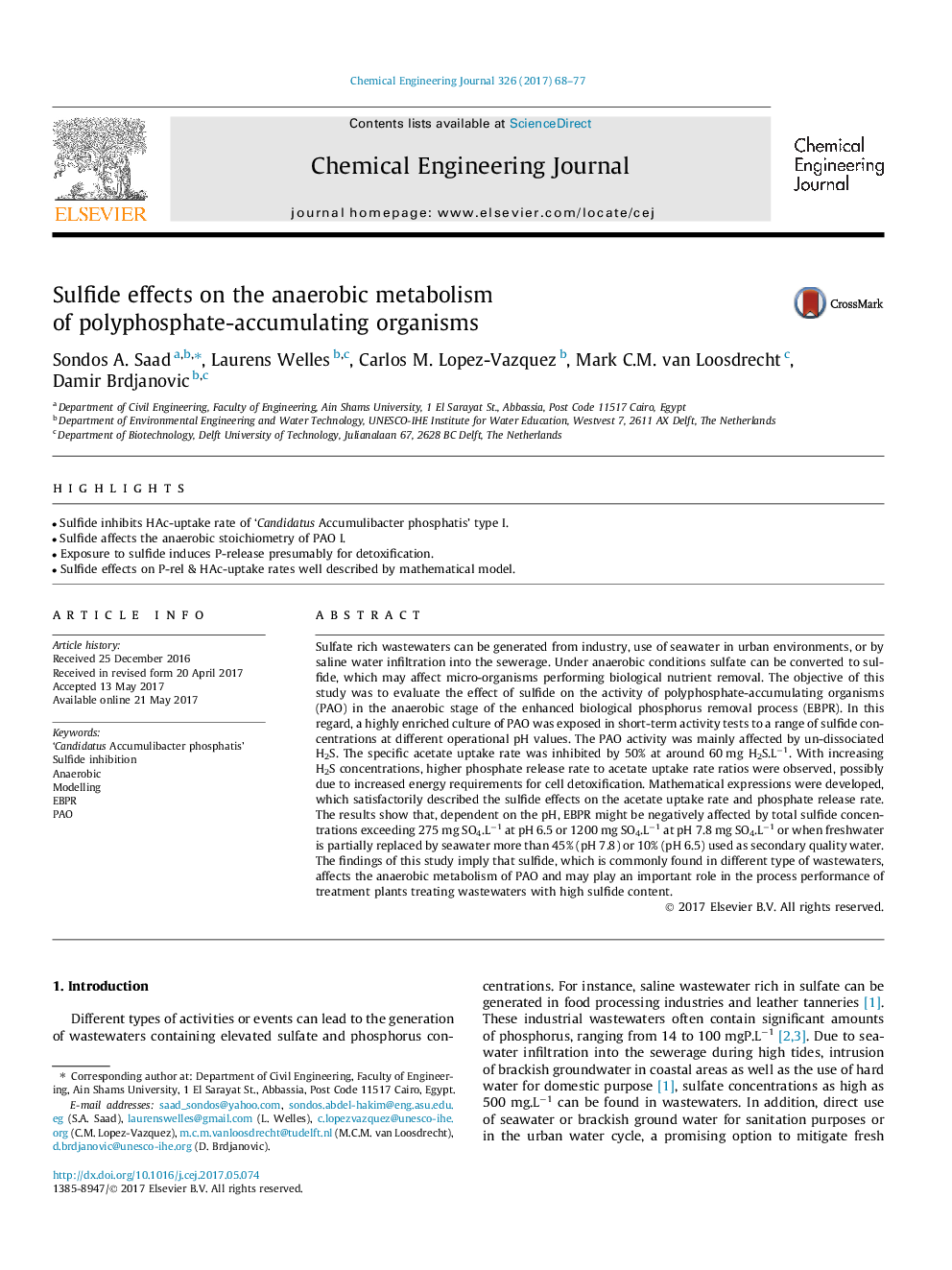| کد مقاله | کد نشریه | سال انتشار | مقاله انگلیسی | نسخه تمام متن |
|---|---|---|---|---|
| 6465436 | 1422952 | 2017 | 10 صفحه PDF | دانلود رایگان |
- Sulfide inhibits HAc-uptake rate of 'Candidatus Accumulibacter phosphatis' type I.
- Sulfide affects the anaerobic stoichiometry of PAO I.
- Exposure to sulfide induces P-release presumably for detoxification.
- Sulfide effects on P-rel & HAc-uptake rates well described by mathematical model.
Sulfate rich wastewaters can be generated from industry, use of seawater in urban environments, or by saline water infiltration into the sewerage. Under anaerobic conditions sulfate can be converted to sulfide, which may affect micro-organisms performing biological nutrient removal. The objective of this study was to evaluate the effect of sulfide on the activity of polyphosphate-accumulating organisms (PAO) in the anaerobic stage of the enhanced biological phosphorus removal process (EBPR). In this regard, a highly enriched culture of PAO was exposed in short-term activity tests to a range of sulfide concentrations at different operational pH values. The PAO activity was mainly affected by un-dissociated H2S. The specific acetate uptake rate was inhibited by 50% at around 60Â mg H2S.Lâ1. With increasing H2S concentrations, higher phosphate release rate to acetate uptake rate ratios were observed, possibly due to increased energy requirements for cell detoxification. Mathematical expressions were developed, which satisfactorily described the sulfide effects on the acetate uptake rate and phosphate release rate. The results show that, dependent on the pH, EBPR might be negatively affected by total sulfide concentrations exceeding 275Â mg SO4.Lâ1 at pH 6.5 or 1200Â mg SO4.Lâ1 at pH 7.8Â mg SO4.Lâ1 or when freshwater is partially replaced by seawater more than 45% (pH 7.8) or 10% (pH 6.5) used as secondary quality water. The findings of this study imply that sulfide, which is commonly found in different type of wastewaters, affects the anaerobic metabolism of PAO and may play an important role in the process performance of treatment plants treating wastewaters with high sulfide content.
Journal: Chemical Engineering Journal - Volume 326, 15 October 2017, Pages 68-77
